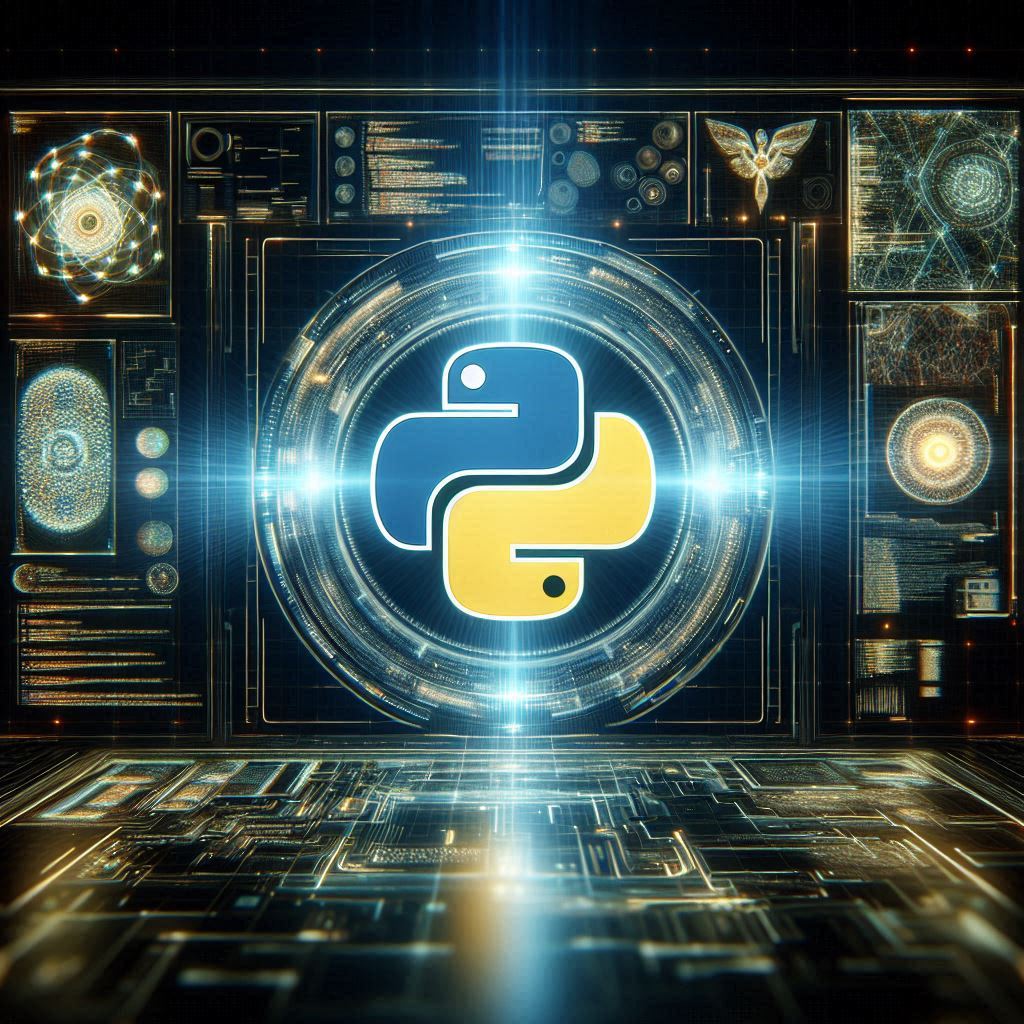Artificial intelligence has evolved rapidly in recent years, and Python remains the most dominant language driving this transformation. While libraries like Pandas and NumPy have long been the foundation of AI development for data manipulation and numerical computation, the ecosystem has grown far beyond them. In 2025, AI developers must master a new generation of tools that go deeper into model optimization, distributed training, explainability, and multimodal intelligence. These libraries extend Python’s capabilities far beyond basic analytics, enabling developers to build efficient, scalable, and interpretable AI systems.
In this comprehensive guide, we will explore five Python libraries that every AI developer should master in 2025. Each of these libraries serves a unique purpose in the modern AI pipeline, from model acceleration and explainability to automation and advanced neural architecture management. Understanding these libraries will help developers move from traditional model building to production-level artificial intelligence.
1. PyTorch Lightning: Simplifying Deep Learning Engineering
PyTorch revolutionized deep learning by offering an intuitive interface for building neural networks. However, as projects scaled, the raw PyTorch workflow became complex—requiring repetitive boilerplate code for model training, logging, checkpointing, and distributed execution. PyTorch Lightning emerged to solve this problem. It provides a high-level structure that abstracts away the engineering complexity while preserving PyTorch’s flexibility.
In 2025, PyTorch Lightning continues to be a critical tool for AI developers who want to transition from prototype to production seamlessly. It enforces a modular structure that makes models reproducible, maintainable, and easy to scale.
Why PyTorch Lightning Matters
PyTorch Lightning provides a clean separation between research and engineering. It organizes training code into a standardized format using the LightningModule, which handles forward passes, training steps, validation logic, and optimization. This structure allows developers to focus on experimentation without worrying about peripheral details like distributed training or hardware acceleration.
Another major advantage is the Trainer API, which automatically manages GPU usage, checkpointing, and gradient accumulation. Developers can scale from a single GPU to multiple nodes across a cluster with just a few lines of code. This scalability is crucial for training large models such as transformers or multimodal networks.
PyTorch Lightning integrates with popular logging tools such as Weights & Biases, TensorBoard, and Comet.ml, providing seamless experiment tracking. It also supports precision training (FP16/BF16), which is essential for optimizing performance on modern hardware like NVIDIA A100 or H100 GPUs.
Key Features of PyTorch Lightning
The library’s most compelling features include automated checkpointing, gradient clipping, early stopping, mixed precision support, and native distributed training. These features simplify complex tasks that would otherwise require hundreds of lines of manual code.
Moreover, PyTorch Lightning’s Fabric API—introduced to provide more granular control over hardware abstraction—makes it easier to integrate Lightning into existing PyTorch workflows. Developers can now combine custom PyTorch code with Lightning’s scalable backend to achieve both flexibility and automation.
PyTorch Lightning in AI Research and Production
By 2025, PyTorch Lightning has become the de facto standard for scalable AI experimentation. It is used by research institutions, startups, and enterprise AI labs to manage large-scale model training. Whether fine-tuning LLMs like LLaMA 3 or training diffusion models for image synthesis, Lightning’s infrastructure ensures that experiments are consistent and reproducible.
Mastering PyTorch Lightning means mastering the engineering backbone of modern AI workflows. It transforms raw code into structured pipelines that can evolve from prototype notebooks to production-grade models without rewriting the core logic.
2. Hugging Face Transformers: The Backbone of Modern NLP and Beyond
The transformer architecture has fundamentally reshaped artificial intelligence. Originally designed for natural language processing (NLP), transformers now power everything from computer vision to audio recognition and multimodal reasoning. The Hugging Face Transformers library made these models accessible to everyone, enabling developers to train, fine-tune, and deploy transformer-based architectures with minimal effort.
In 2025, the Transformers library remains the most influential and widely used AI toolkit for large-scale models. It hosts thousands of pre-trained models—including LLaMA, BERT, GPT, T5, and CLIP—covering text, vision, speech, and cross-modal understanding.
The Core Architecture of Hugging Face Transformers
At its core, the library provides a unified API for model loading, tokenization, and inference. Developers can fine-tune pre-trained models using just a few lines of code. The Trainer API simplifies supervised and unsupervised training workflows, automatically handling distributed training, checkpointing, and evaluation.
The library supports an extensive ecosystem of models and datasets through the Hugging Face Hub, where researchers and organizations share open-weight models for community use. Integration with the Datasets and Accelerate libraries allows for end-to-end pipelines—from data preparation to fine-tuning and deployment.
Hugging Face Transformers supports multiple frameworks, including PyTorch, TensorFlow, and JAX, making it accessible to developers across different environments. Its modularity also allows custom model architectures to be integrated seamlessly.
Why Hugging Face Is Indispensable in 2025
Transformers dominate every subfield of AI. From LLMs for text generation to diffusion-based vision models and audio transformers, Hugging Face offers unified access to state-of-the-art architectures. The library’s community-driven ecosystem ensures that the latest models are always available, reducing the barrier to entry for innovation.
Beyond traditional NLP, Hugging Face now powers multimodal systems that combine vision and language—such as CLIP, BLIP-2, and Flamingo-style architectures. These models form the basis of generative AI systems that can understand and create text, images, and even video.
Furthermore, Hugging Face supports quantized and optimized inference through integrations with Optimum, ONNX Runtime, and Intel OpenVINO, making large models efficient enough for real-time deployment on consumer hardware.
Fine-Tuning and Deployment
One of the most powerful aspects of Hugging Face is its simplicity in fine-tuning large models. Developers can adapt models like LLaMA 3, Falcon, or Mistral using parameter-efficient fine-tuning methods such as LoRA and PEFT, which are integrated directly into the library. This allows fine-tuning of billion-parameter models even on a single GPU.
For deployment, Hugging Face’s Inference Endpoints and Text Generation Inference (TGI) provide production-ready solutions with load balancing, quantization, and memory optimization. In 2025, these tools have become standard infrastructure for deploying AI assistants, chatbots, and reasoning models at scale.
3. LangChain: Building Intelligent AI Applications with Context and Memory
The era of isolated models is over. In 2025, the frontier of AI development lies in building intelligent systems that chain together multiple components—models, memory, tools, and external data sources. LangChain has become the foundational framework for orchestrating these complex AI workflows.
LangChain provides the infrastructure to create language model applications that can reason, remember, and act. It bridges the gap between model inference and application logic, enabling the creation of dynamic agents capable of interacting with APIs, databases, and real-world environments.
The LangChain Framework
LangChain is designed around modular components: LLMs, prompts, chains, agents, and memory. Each component encapsulates a specific function. The LLM module interfaces with language models (such as those hosted on Hugging Face or OpenAI), while the prompt module manages structured input-output templates. Chains connect these components in sequence, enabling multi-step reasoning workflows.
Agents represent higher-level intelligence that can decide which tool or chain to invoke based on user input. LangChain’s memory module enables models to maintain conversational or task-specific context across interactions, a critical feature for chatbots, copilots, and autonomous agents.
Why LangChain Is Essential for AI Developers
By 2025, LangChain has evolved into a universal framework for LLM orchestration. It supports integration with multiple model backends, vector databases, and knowledge graphs, allowing developers to build retrieval-augmented generation (RAG) systems effortlessly. This capability is vital for enterprise AI, where models must access dynamic data from internal sources rather than relying solely on static training corpora.
LangChain also supports tool-using agents, where an LLM can perform actions such as executing code, querying APIs, or retrieving data. This moves AI systems from passive responders to active participants in computational workflows.
Moreover, LangChain integrates seamlessly with libraries like Pinecone, Weaviate, and FAISS for efficient vector search. These integrations enable long-term memory and contextual retrieval, essential for applications that require persistence, such as personalized assistants and research copilots.
LangChain in 2025: Building Autonomous AI Systems
In 2025, LangChain is the backbone of next-generation AI products—from customer support automation to scientific research assistants. It enables developers to combine reasoning models with external computation, turning static models into adaptive systems.
Mastering LangChain allows developers to move beyond model fine-tuning and into the realm of AI orchestration—the process of connecting intelligence with action, grounding, and memory. As AI becomes increasingly agentic and multimodal, LangChain remains the essential framework for managing complex, context-aware systems.
4. PyTorch Geometric: Understanding Graph Neural Networks and Relational Intelligence
While transformers and CNNs dominate language and vision tasks, many real-world problems are inherently relational. Social networks, biological systems, recommendation engines, and knowledge graphs all rely on understanding relationships between entities. Graph Neural Networks (GNNs) are designed for this purpose, and PyTorch Geometric (PyG) is the leading library for implementing them.
PyTorch Geometric provides a highly flexible and efficient framework for constructing, training, and evaluating GNNs within the PyTorch ecosystem. It abstracts the complexity of graph data handling, enabling developers to work directly with graph structures, node embeddings, and edge features.
How PyTorch Geometric Works
Graphs are composed of nodes and edges. Traditional neural networks cannot directly process this irregular, non-Euclidean structure. PyTorch Geometric solves this challenge through message passing, where information is propagated across edges to update node representations iteratively.
The library provides a suite of prebuilt GNN layers, such as Graph Convolutional Networks (GCN), Graph Attention Networks (GAT), and GraphSAGE, as well as utilities for data loading, batching, and transformation. Developers can easily define their own models by combining these building blocks.
PyG integrates seamlessly with PyTorch Lightning and Hugging Face Transformers, allowing hybrid architectures that combine graph reasoning with natural language understanding. For example, a system can use textual embeddings from a transformer model as node features in a graph network, enabling powerful multimodal reasoning.
Applications of PyTorch Geometric
By 2025, GNNs have become indispensable in domains that rely on relational data. In drug discovery, PyG is used to model molecular structures as graphs of atoms and bonds, accelerating the identification of novel compounds. In cybersecurity, it enables anomaly detection in complex network traffic graphs. In recommendation systems, GNNs capture interactions between users and items more effectively than traditional collaborative filtering methods.
Knowledge graph reasoning, another emerging field, benefits immensely from PyTorch Geometric. By combining symbolic and neural representations, developers can build hybrid systems that reason over structured knowledge bases with deep learning flexibility.
Why Every AI Developer Needs PyTorch Geometric
Understanding PyTorch Geometric equips developers with the ability to model and reason over interconnected systems—a capability that is becoming increasingly critical as AI applications shift toward contextual understanding and relational intelligence.
PyG also serves as a foundation for Graph Transformers, which merge the advantages of attention mechanisms with graph topology. These models are leading breakthroughs in scientific AI, particularly in chemistry, materials science, and complex systems modeling.
5. SHAP and Captum: Explainability and Interpretability in AI
As AI systems permeate critical sectors such as healthcare, finance, and law, understanding why a model makes a decision is as important as the decision itself. Explainable AI (XAI) ensures that models are transparent, interpretable, and accountable. Two key Python libraries dominate this space: SHAP (SHapley Additive exPlanations) and Captum, PyTorch’s native interpretability library.
Understanding SHAP
SHAP is based on cooperative game theory, where each feature in a model’s input is treated as a “player” contributing to the final prediction. It assigns a Shapley value to each feature, quantifying its contribution to the model’s output. This framework provides a unified measure of feature importance that is both mathematically rigorous and model-agnostic.
In 2025, SHAP continues to be a gold standard for explaining complex models, from gradient-boosted trees to deep neural networks. It enables visualization of how individual features influence predictions, which is critical for building trust in AI systems. Developers can use SHAP to analyze biases, detect spurious correlations, and ensure fairness across demographic groups.
Understanding Captum
Captum extends interpretability into the deep learning domain. It provides attribution methods such as Integrated Gradients, Saliency Maps, and DeepLIFT, specifically designed for PyTorch models. Captum integrates directly with PyTorch Lightning, allowing developers to analyze activations, gradients, and neuron importance with minimal overhead.
Captum supports both feature-level and layer-level interpretation, making it useful for debugging and optimizing deep models. For example, in computer vision tasks, Captum can visualize which regions of an image influence classification decisions. In NLP, it can highlight which words or phrases contribute most to sentiment or intent predictions.
Explainability as a Core Skill in 2025
Explainability is no longer optional—it is a legal and ethical requirement in many industries. Mastery of SHAP and Captum allows developers to build AI systems that are transparent and auditable. In regulated environments such as healthcare diagnostics or financial risk assessment, these libraries provide the evidence needed to justify automated decisions.
Moreover, explainability tools are increasingly being used to improve model performance. By identifying irrelevant or misleading features, developers can refine training data and architectures. SHAP and Captum thus serve not only as interpretability tools but also as feedback mechanisms for model improvement.
The Future of AI Development: Integration, Efficiency, and Ethics
By 2025, the Python AI ecosystem has matured into an integrated, highly efficient, and ethically conscious environment. The five libraries discussed—PyTorch Lightning, Hugging Face Transformers, LangChain, PyTorch Geometric, and SHAP/Captum—represent the pillars of this new landscape. Together, they enable developers to build scalable, interpretable, and intelligent systems that go far beyond traditional machine learning workflows.
The trend is clear: AI development is no longer just about creating models; it’s about creating systems that think, reason, explain, and adapt. These libraries form the foundation for that vision, providing the technical and ethical tools necessary to shape the next generation of artificial intelligence.
In mastering them, developers move beyond conventional data science into the realm of AI engineering—a discipline that combines software engineering, cognitive modeling, and human-centered design. The future of AI belongs to those who can harness these tools to build systems that are not only powerful but also transparent, ethical, and aligned with human values.






